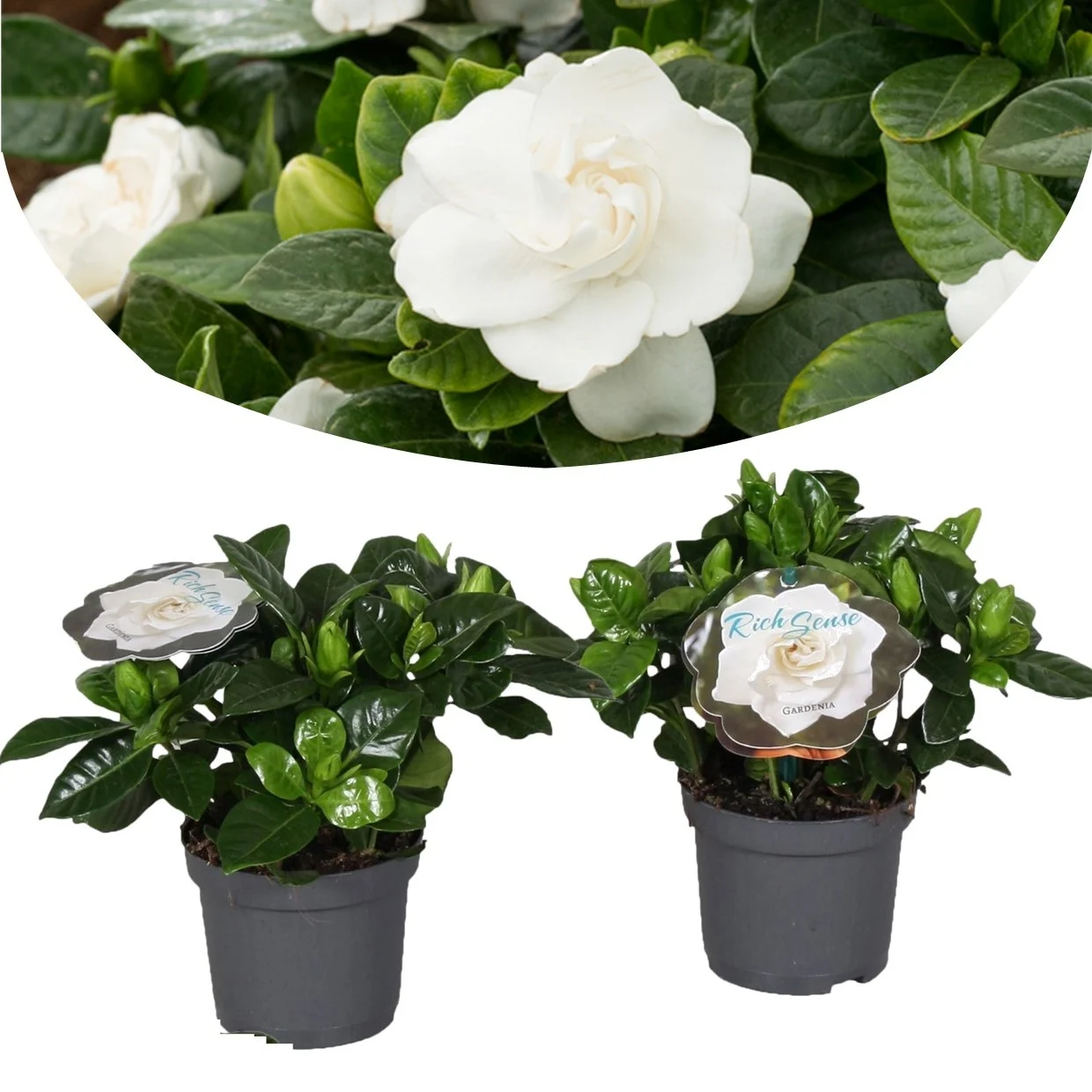
Gardenia Information & tips - Plant Guide
- Water regularly
- Semi-shade, no direct sunlight
- Not air-purifying
- Nutrition every month (summer)
- Toxic for animals
- Repot every three year
Intro
The gardenia, also called the Cape Jasmine, is not only a beautiful plant, but is also very popular because of the smell it gives off. This plant mainly attracts its attention because of its beautiful dark green leaves with creamy white, vanilla scented, double flowers. Physicist Dr. Garden discovered the plant in the 18th century.
Location
The gardenia loves a warm and light environment. It is important to avoid direct sunlight. If there are too many fluctuations in temperature, it can happen that bud fall occurs during the flowering period. High humidity is also important when the flower heads are formed. In winter it is possible to leave the plant in a cooler place, as there will be no flowering and the plant will be in a kind of rest period. Still maintain a temperature of at least 15 degrees Celsius. It is possible to put the plant outside in the summer, but make sure that there is not constant bright sunlight on it.
Temperature
As mentioned before, the gardenia likes relatively warm temperatures. It is recommended to keep a fixed temperature of around 18 degrees Celsius. The plant is very sensitive to temperature fluctuations so take this into account.
Pruning
It can happen that the plant becomes too big. You can then prune the plant back. The best time to do this will be around March. When your gardenia's are still young, it is advisable to prune the plant as well, as this will ensure a fuller bloom.
Always remove neglected branches and faded flowers. This also stimulates the growth of new branches. When the gardenia is outside, it is also important that you cut away the branches that threaten to hit the ground. These branches can cause infections.
Tip: Never cut off all leaves, as the plant always needs leaves to produce food for the root system.
Repotting
It is advisable to repot the gardenia every 3/4 years in the spring. With the gardenia it is only extra important that you do this with lime-poor soil. Gardenia's are allergic to lime and the leaves will discolor if there is too much lime in the soil. When repotting, therefore, use acidic, humus-rich soil (heathland).
Origin
The gardenia belongs to the Rubiaceae family (star-leaved family) and grows in Vietnam, South China, Japan, India and Taiwan. They are mainly evergreen shrubs and can also occur as trees up to 15 meters high. In total there are 142 species. The plant was established in the 10th century by the Chinese painter Xu Xi. The plant was discovered in the 18th century by the American doctor and botanist Alexander Garden.
Diseases
The gardenia can suffer from various insect pests. If the plant is not kept moist enough, mealy bug can develop. Prevent this by keeping the plant moist. Furthermore, the plant can suffer from white fly, especially when the plant is in the garden, these insects can occur.
There can also be aphids on the plant, these can easily be controlled with a plant spray with soap and water. Spray on the underside and on the top of the leaves. You could also use this for mealybug.
The plant can also suffer from spider mites. You can find out if the plant has spider mites by gently shaking the gardenia above a piece of white paper. When you see red, yellow, green or brown spots, it is quite possible that there is spider mite. If this is the case, it is advisable to buy neem oil, which is available in grocery stores or department stores.
It is also possible that your gardenia has yellowish leaves. This may indicate root knot nematodes. These are small parasitic worms that attack the roots. Unfortunately there is no treatment for this.

